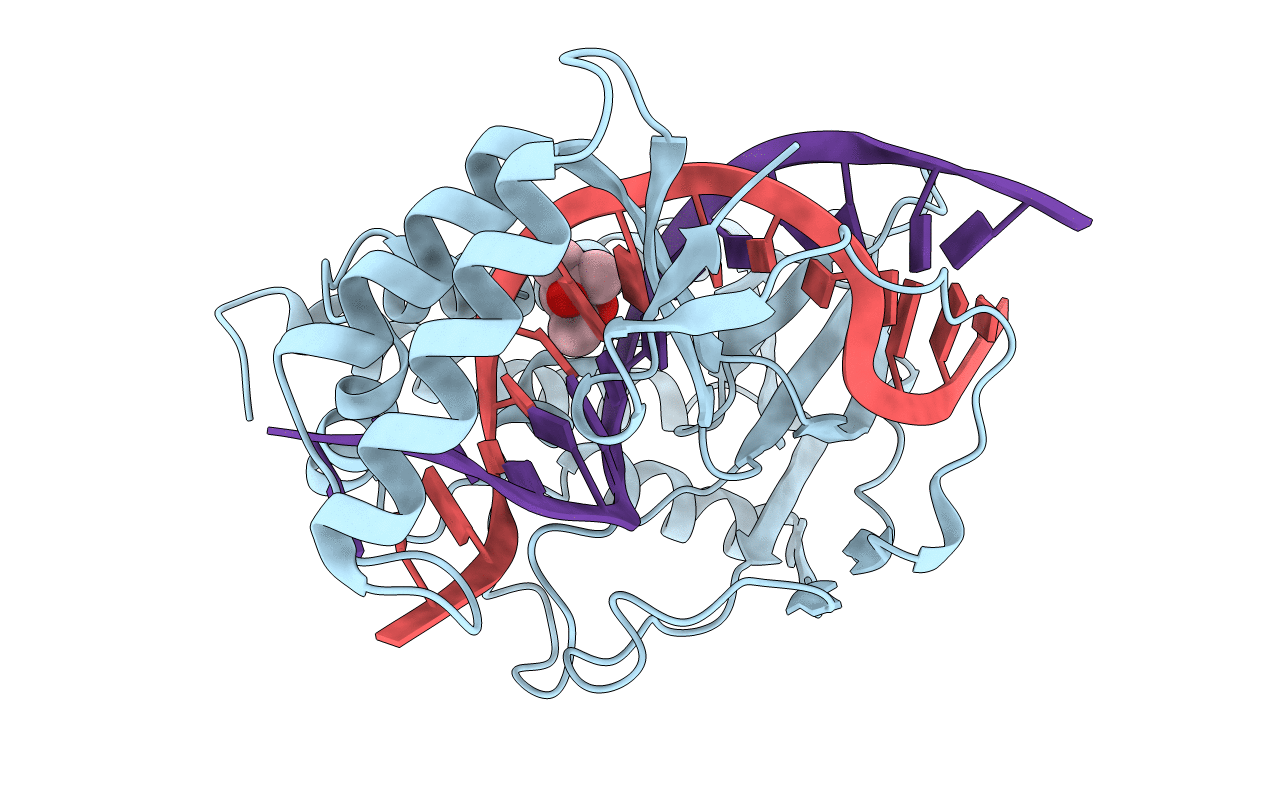
Deposition Date
2015-01-20
Release Date
2015-08-26
Last Version Date
2023-09-27
Entry Detail
PDB ID:
4XR0
Keywords:
Title:
Escherichia Coli Replication Terminator Protein (Tus) Complexed With DNA- G/T mismatch.
Biological Source:
Source Organism:
Escherichia coli (strain K12) (Taxon ID: 83333)
Escherichia coli (Taxon ID: 562)
Escherichia coli (Taxon ID: 562)
Host Organism:
Method Details:
Experimental Method:
Resolution:
2.80 Å
R-Value Free:
0.29
R-Value Work:
0.21
R-Value Observed:
0.22
Space Group:
P 41 21 2


